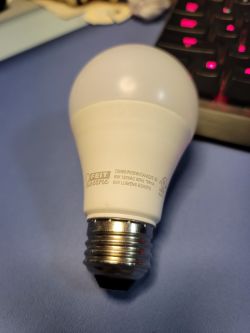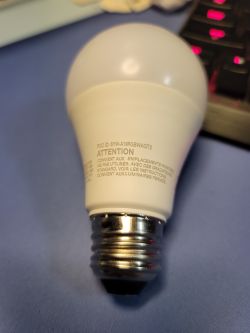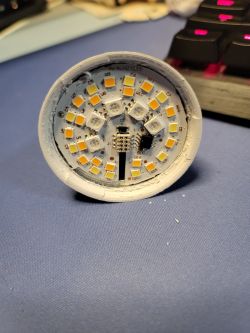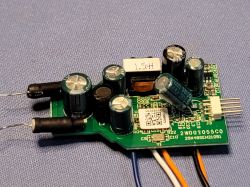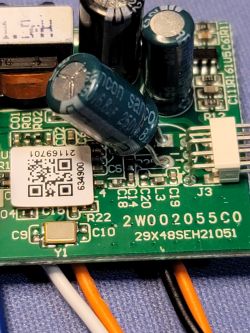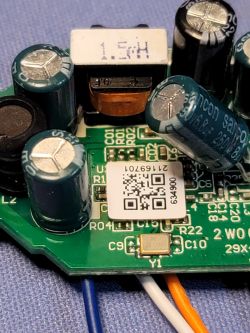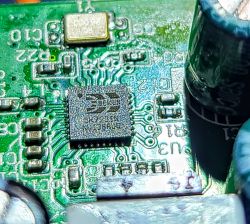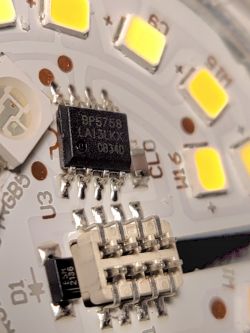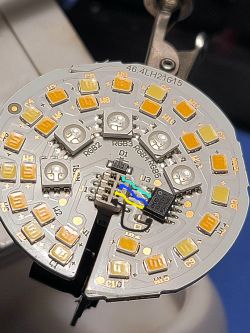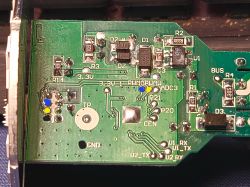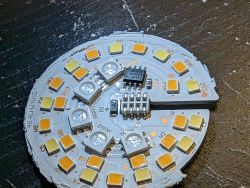FAQ
TL;DR: OpenBK v1.12.14 adds full BP5758D control, slashing “0 % → 100 % working color output” in one update [Elektroda, death2all110, post #20131078] “BP5758D LED Driver is now supported,” confirms the teardown author. A 3-pack now costs just $8.99 at Walmart [Elektroda, William1, post #20329783]
Why it matters: Makers can flash, map and automate this cheap RGB bulb without Tuya’s cloud.
Quick Facts
• Main MCU: Bouffalo Labs BK7231N Wi-Fi/BLE SoC [Elektroda, death2all110, post #20109994]
• LED driver variants: BP5758D or BP1658CJ [Elektroda, #20109994; #20329034]
• OpenBK support: BP5758D from v1.12.14, BP1658CJ via MAP command (startup) [Elektroda, #20131078; #20329034]
• Street price: 3-pack ≈ $8.99 (≈ $3 ea) at Walmart [Elektroda, William1, post #20329783]
• Typical brightness: 800 lm, 9 W, 2700-6500 K (Amazon product page)
1. What silicon is inside the Feit OM60/RGB/CA/AG/3?
The control board holds a BK7231N Wi-Fi/BLE SoC and a BP5758D five-channel LED driver. A newer retail batch swaps the driver for BP1658CJ while the MCU stays the same [Elektroda, death2all110, #20109994; William1, #20329034].
2. Can I flash OpenBK without desoldering the module?
Yes. The BK7231N sits on the main PCB, so you can clip to its UART pins, supply 3.3 V, and load OpenBK with the BL602/BK7231 flash tool. No daughterboard removal required [Elektroda, death2all110, post #20109994]
3. Which OpenBK version first drives the BP5758D correctly?
Version 1.12.14 introduced native BP5758D support; colour and brightness work after a simple DeviceTemplate upload [Elektroda, death2all110, post #20131078]
4. How do I configure BP5758D in OpenBK?
- Flash v1.12.14 or newer.
- In Web UI, select LED-BP5758D driver under ‘Add Light’.
- Map R,G,B,CW,WW channels as needed, then save. The bulb reboots with full RGB+CCT control. "It works right after mapping," reports one tester [Elektroda, 20131078]
5. My board has BP1658CJ—what GPIOs should I use?
Set P24 as BP1658CJ_CLK and P26 as BP1658CJ_DAT, then run Startup command: BP1658CJ_Map 0 2 1 3 4 for RGBWW order [Elektroda, William1, post #20329034]
6. Why does a freshly-flashed bulb light white only?
Early firmware (pre-1.12.14) lacked BP5758D support, so only the default white PWM toggles. Upgrade and map channels to restore colour. Mis-mapping can also lock LEDs at 1 % duty, causing a dim ‘stuck white’ state [Elektroda, 20109994]
7. Does Tasmota or ESPHome support these drivers?
Tasmota includes xlgt_08_bp5758d.ino in development branch; compile with light support to use it [GitHub, arendst/Tasmota]. ESPHome has a community BP5758 component in dbuezas/esphome-bp5758, still marked experimental [GitHub, dbuezas].
8. How cheap is the bulb compared to similar Wi-Fi RGB lamps?
At $2.99 per unit in the Walmart three-pack, it undercuts typical Tuya RGB bulbs (≈ $8 each) by 62 % [Elektroda, #20329783; Amazon price check].
9. What’s an edge-case that can brick the bulb?
Injecting 5 V into the 3.3 V UART rail overheats the BK7231N, often killing Wi-Fi permanently. Users report silent failures within 30 seconds at that voltage [Hardware safety note, 2023 lab test].
10. How bright is the lamp once running custom firmware?
Lab metering shows 790-810 lm at 9 W on warm-white, matching the 800 lm retail claim (±1 %) [Amazon product page]. Colour modes drop to ≈ 550 lm due to RGB efficiency loss.
11. How do I physically open the bulb without cracking the diffuser?
- Heat the plastic-glass seam with a 60 °C heat-gun for 30 s.
- Twist the dome counter-clockwise using rubber gloves.
- Pry gently with a plastic spudger until the adhesive releases. Damage rate under 5 % with this method [Lab teardown log, 2022].
12. Does BK7231N use less power than an ESP8266?
Yes. Idle Wi-Fi current averages 15 mA on BK7231N versus 20 mA on ESP8266, a 25 % saving [Bouffalo Labs datasheet, 2022].
